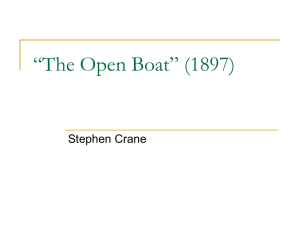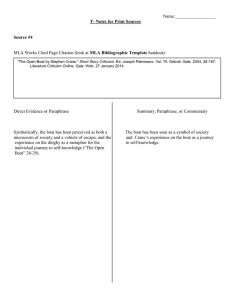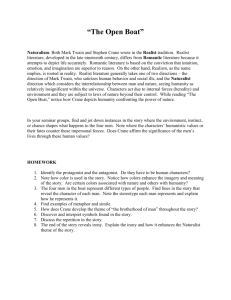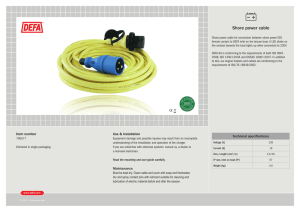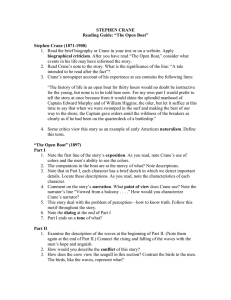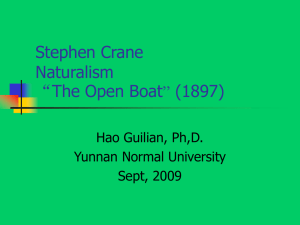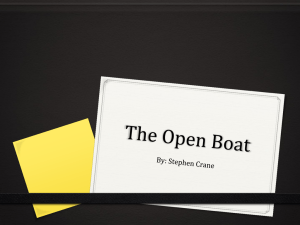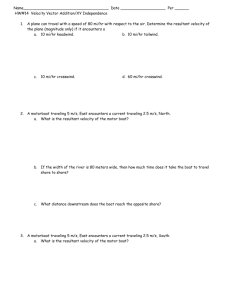The Open Boat - Saint Joseph Regional High School
advertisement
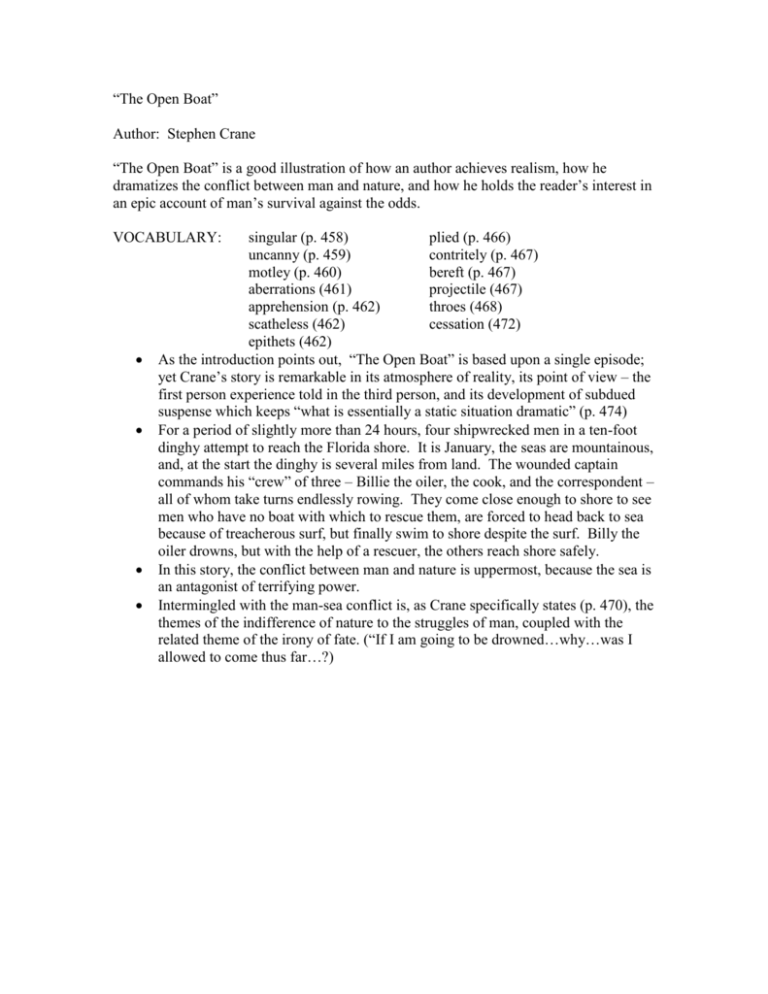
“The Open Boat” Author: Stephen Crane “The Open Boat” is a good illustration of how an author achieves realism, how he dramatizes the conflict between man and nature, and how he holds the reader’s interest in an epic account of man’s survival against the odds. VOCABULARY: singular (p. 458) plied (p. 466) uncanny (p. 459) contritely (p. 467) motley (p. 460) bereft (p. 467) aberrations (461) projectile (467) apprehension (p. 462) throes (468) scatheless (462) cessation (472) epithets (462) As the introduction points out, “The Open Boat” is based upon a single episode; yet Crane’s story is remarkable in its atmosphere of reality, its point of view – the first person experience told in the third person, and its development of subdued suspense which keeps “what is essentially a static situation dramatic” (p. 474) For a period of slightly more than 24 hours, four shipwrecked men in a ten-foot dinghy attempt to reach the Florida shore. It is January, the seas are mountainous, and, at the start the dinghy is several miles from land. The wounded captain commands his “crew” of three – Billie the oiler, the cook, and the correspondent – all of whom take turns endlessly rowing. They come close enough to shore to see men who have no boat with which to rescue them, are forced to head back to sea because of treacherous surf, but finally swim to shore despite the surf. Billy the oiler drowns, but with the help of a rescuer, the others reach shore safely. In this story, the conflict between man and nature is uppermost, because the sea is an antagonist of terrifying power. Intermingled with the man-sea conflict is, as Crane specifically states (p. 470), the themes of the indifference of nature to the struggles of man, coupled with the related theme of the irony of fate. (“If I am going to be drowned…why…was I allowed to come thus far…?)
